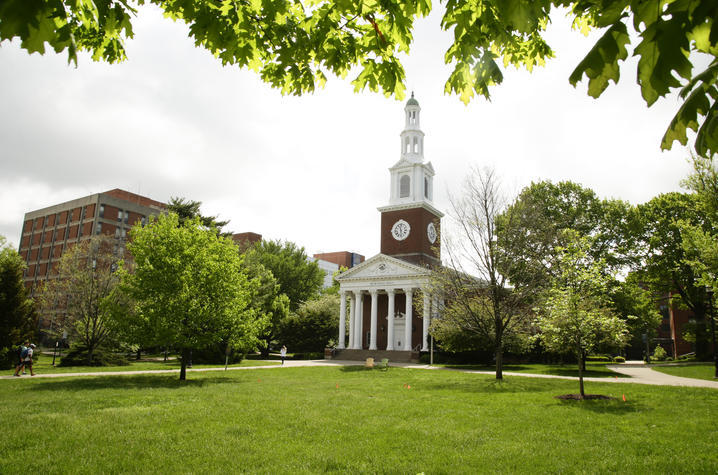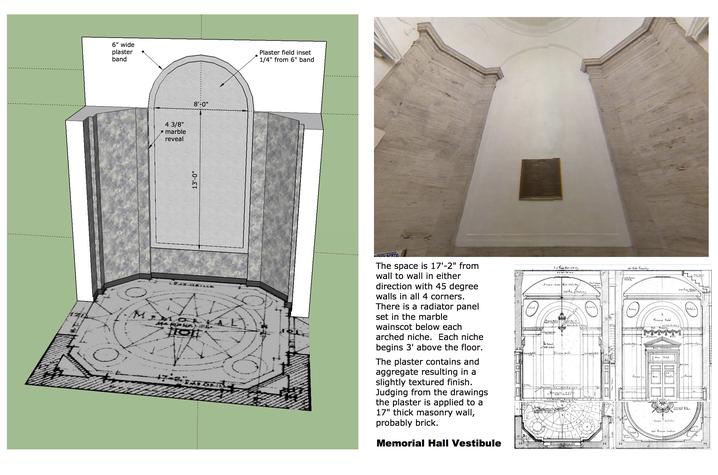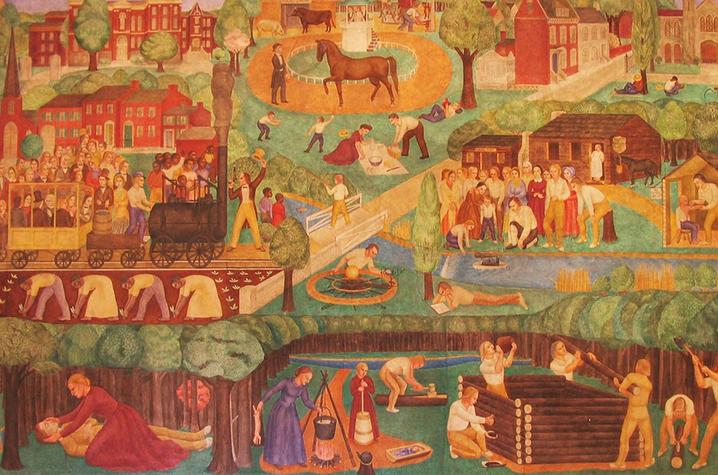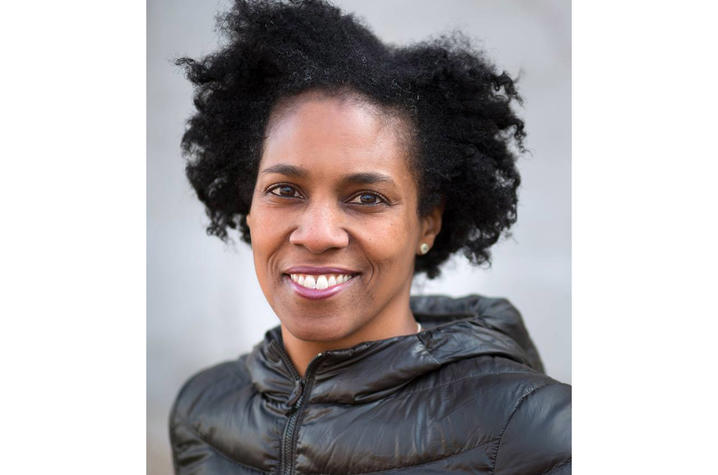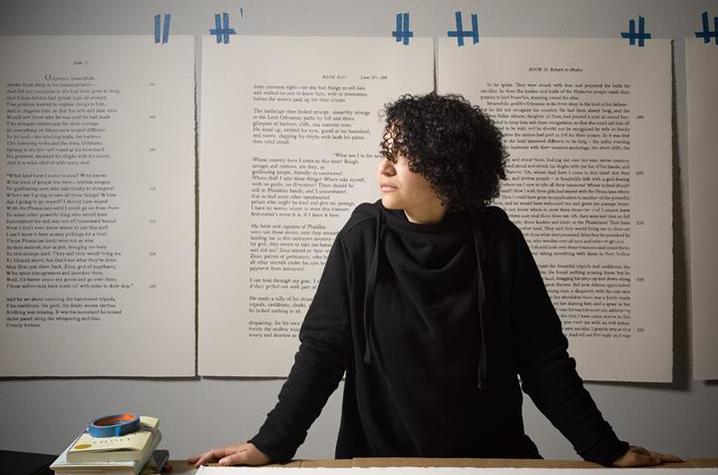Artists Karyn Olivier and Bethany Collins Present Art Concepts for UK’s Memorial Hall
LEXINGTON, Ky. (March 30, 2018) — The past two weeks University of Kentucky has hosted two nationally recognized artists, Karyn Olivier and Bethany Collins, who have designed concepts for art to be featured in two vaulted spaces in Memorial Hall’s vestibule.
As part of their visits, Olivier and Collins presented initial proposals selected for consideration by UK’s Memorial Hall Art Committee. The concepts chosen for review by the committee were acquired during a national search looking for site-specific installations to establish a rich aesthetic and conceptual dialogue with Memorial Hall itself and the mural by Ann Rice O’Hanlon that occupies a large wall in the main lobby.
Over the years, the O’Hanlon mural has been one of many topics in several important discussions on inclusion. The mural has stirred a range of responses. On one hand, it is recognized as a unique document of a time in U.S. history when the government engaged artists to create ambitious acts of American storytelling — the Public Works of Art Project, part of President Franklin D. Roosevelt’s New Deal. On the other, some argue that the mural misrepresents and sanitizes the imagery of the time it depicts. In doing so, it failed to declare the immorality of slavery and instead minimized the violence and inhumanity that many experienced through subjugation and slavery.
In commissioning new artwork for Memorial Hall, the committee asked Olivier and Collins to re-imagine the challenge taken up by O’Hanlon in 1934: to depict Kentucky’s evolution from a frontier state to a modern Commonwealth. As part of that charge, the artists were welcome to interpret the complex realities of Kentucky and the United States today.
“No single artwork will address all of the ideas and emotions that people have about the mural at Memorial Hall. What we want is a thoughtful new work that can expand the conversation about the legacies of Kentucky and the United States, and for something commissioned in 2018 to address the complexities of identity and place in the past as well as the present,” said Stuart Horodner, co-chair of the committee and director of the UK Art Museum.
As part of the artists’ proposals, the committee is looking for works that:
- engage issues of history, race, identity, culture and diversity;
- exemplify a strong concept and skillful use of materials; and
- contribute to an inclusive educational environment.
The initial proposal by Olivier, who visited campus March 19-21, would recreate the O’Hanlon mural in the two vestibule niches. In the work, she is considering highlighting the eight sections in the mural that contain African-American and Native American figures by appearing to remove and replace the people depicted with “gold-leafed” forms who would stand in contrast to the white figures in the mural. She also is considering gold leafing the dome above the space and displaying the “displaced” figures again, but this time as they are represented in the original mural.
Olivier explained, “The use of gold leaf dates back many centuries, often seen in sacred paintings, churches and cathedrals from the Byzantine and Renaissance periods. I hope my discrete use of gold leaf within this ‘contemporary’ mural will serve to elevate the oppressed represented — those who were deemed lowly — to the divine.”
The gold leaf is meant to both “abstract and obfuscate the figures, while highlighting, rarifying and making precious their presence in the scene,” Olivier said.
The initial concept by Collins, who arrived on campus Wednesday and will depart later today, is meant to respond to what many consider O’Hanlon's sanitized depiction of enslaved African Americans. Her proposal would etch two pages from U.S. Department of Justice reports — the Report of the National Advisory Commission on Civil Disorders (or Kerner Report) published in 1968 and the Investigation of the Ferguson Police Department (or Ferguson Report) published in 2015 — into the two arched spaces.
Each niche would feature a page from one of the reports. Collins would choose pages that demonstrate the most similarities between the two documents. In the first niche, a selected page from the Kerner Commission would be stamped into plaster, but made to appear worn to indicate its age. Within the second niche, a selected page from the Ferguson Report would be stamped into plaster but would be created in a sharp and easily legible manner to indicate its place in recent history.
“Facing one another, these pages carved directly into the wall, capture the danger of an unheeded past,” Collins explained. “The project’s visualization of routine American violence complicates the respective role of text and form, while calmly bringing to light the unfathomable violence of the bureaucratize unseen.”
As part of their visits to campus, both Olivier and Collins met with the Memorial Hall Art Committee, faculty and students, as well as toured Memorial Hall. They also had lunch with several African-American students who originally met with President Eli Capilouto and university officials in December 2015 to present a list titled “African/African-American Student Concerns on Racial Climate.” Included in the list of 18 concerns was No. 14 “Racist mural in Memorial Hall.” In addition, each artist gave a talk on their proposals for the public on March 20 and 29.
“This is an important step forward in building and sustaining an inclusive campus community,” said Terry Allen, committee co-chair and associate vice president for Institutional Equity, on the artists’ visits and proposals. “The O’Hanlon mural in Memorial Hall has greeted thousands of students and guests visiting the facility for over 80 years. Our goal is to provide a proper context for the artwork, to tell a complete story.”
The committee would like to hear thoughts from the UK community members who met with and/or heard the artists' presentations during these visits. Individuals wishing to share their ideas are encouraged to email the committee at MemHallArtCom@uky.edu by midnight, April 1.
The artists’ presentations at UK are not the final concepts. Both artists commented during their public talks that the campus visit would have some impact on their final proposals which will be submitted to the UK committee in the coming month.
Born in Trinidad and Tobago, Olivier received her MFA from Cranbrook Academy of Art and her bachelor’s degree from Dartmouth College. She has exhibited at the Gwangju and Busan Biennials, the Studio Museum in Harlem, the Whitney Museum of Art, MoMA P.S.1, the Museum of Fine Arts Houston, CAM Houston, The Mattress Factory and SculptureCenter. She is a recipient of the John Simon Guggenheim Memorial Foundation Fellowship, the Joan Mitchell Foundation Award, the New York Foundation for the Arts Award, a Pollock-Krasner Foundation grant, the William H. Johnson Prize, the Louis Comfort Tiffany Foundation Biennial Award, a Creative Capital Foundation grant and a Harpo Foundation grant. Olivier is currently an associate professor and head of the sculpture program at Tyler School of Art.
Collins, who was born is Alabama, is a multidisciplinary artist whose conceptually driven work is fueled by a critical exploration of how race and language interact. Her works have been exhibited in solo and group exhibitions nationwide, including the Studio Museum in Harlem, the Drawing Center, the High Museum of Art and the Birmingham Museum of Art. Collins has been recognized as an artist-in-residence at the Studio Museum in Harlem, MacDowell Colony, Bemis Center and Hyde Park Art Center, among others. In 2015, she was awarded the Hudgens Prize. She holds an MFA from Georgia State University and a bachelor’s degree from University of Alabama.





